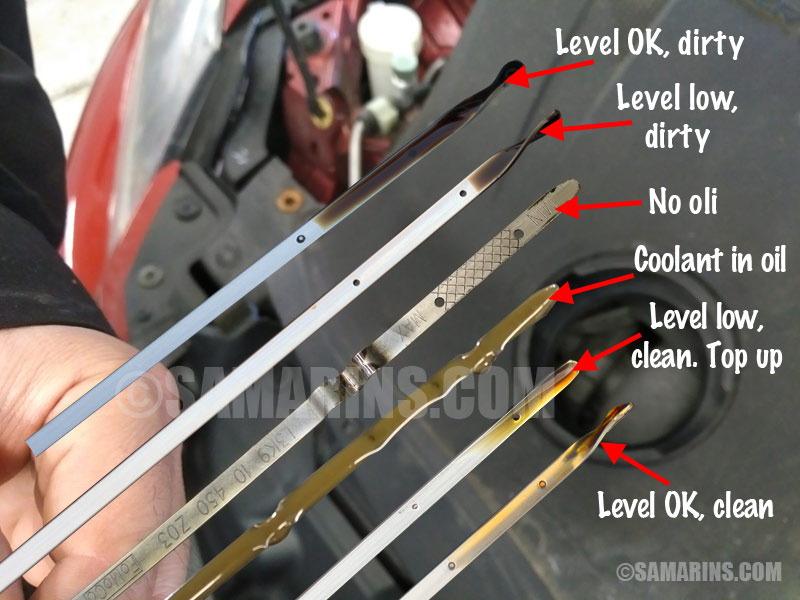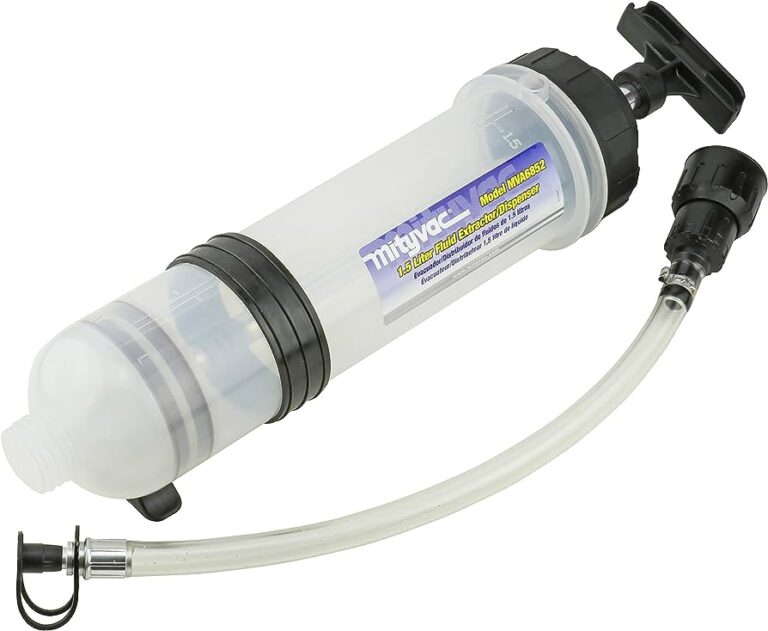How to Know If Your Car is Low on Oil
To know if your car is low on oil, check the oil level on the dipstick. Low oil levels can cause engine damage.
Keeping an eye on your car’s oil level is crucial for its performance and longevity. Regularly checking the oil level using the dipstick can help prevent potential issues such as engine overheating or damage. A low oil level may indicate leaks or burning oil, which can lead to costly repairs if left unaddressed.
In addition to the dipstick, be aware of any dashboard warning lights related to oil pressure. It’s essential to top up your oil promptly if it’s low to ensure your vehicle operates smoothly and efficiently.

Credit: www.samarins.com
Signs Of Low Oil Level
Dashboard Warning Lights
One of the key signs indicating low oil level is the illumination of the dashboard warning lights. When the oil level in your car’s engine drops significantly, the oil pressure warning light may come on. This indicates that there may not be enough oil to properly lubricate the internal components of the engine. If you see this warning light, it’s crucial to address the issue promptly to prevent potential damage to your engine.
Oil Leaks
If you notice oil leaks underneath your parked car, it could be a sign of low oil level. As the oil level decreases, the remaining oil may be forced out through small gaps or cracks in the engine or oil pan, resulting in leaks on the ground beneath the vehicle. Keep an eye out for any oil spots or puddles under your car, as addressing oil leaks promptly can help prevent further engine damage and maintain optimal performance.
Strange Engine Sounds
Low oil level can also lead to strange engine sounds, such as knocking or ticking noises. When the engine lacks sufficient lubrication, the metal components can grind against each other, causing these unusual sounds. If you hear such noises coming from your engine, it’s crucial to check the oil level and top it up as needed to prevent potential mechanical issues and maintain the health of your vehicle.

Credit: www.raybrandtchryslerdodgejeep.com
Checking The Oil Level
Locate The Dipstick
Pop the hood of your car and locate the engine oil dipstick near the engine. It usually has a brightly colored handle for easy identification.
Pull Out And Wipe The Dipstick
Once you’ve found the dipstick, carefully pull it out of the engine. Wipe off any oil using a clean rag or tissue to get an accurate reading.
Reinsert The Dipstick And Check The Level
After wiping the dipstick, reinsert it back into the engine all the way. Pull it out again and check the oil level. The dipstick will have markings indicating whether the oil level is low, adequate, or high.
Steps To Take If Oil Level Is Low
If your car is low on oil, follow these steps:
Add Oil
1. Gather a funnel, the right grade of oil, and a rag.
2. Locate the oil filler cap under the hood.
3. Remove the cap and insert the funnel.
4. Slowly pour the oil into the funnel.
5. Check the dipstick periodically to ensure you don’t overfill.
Check For Leaks
1. Inspect the area where you park for oil spots.
2. Check under the car for drips or puddles of oil.
3. Look for any visible cracks or damage in the oil pan.
Schedule An Oil Change
1. Contact a reputable mechanic to schedule an appointment.
2. Consider any other maintenance needs while you’re at the shop.
3. Trust the professionals to properly maintain your car’s oil levels.

Credit: wiygul.com
Regular Maintenance For Oil
Regular maintenance for oil is crucial to ensure the smooth functioning of your car. Here are some signs to look out for to know if your car is low on oil.
Regular Maintenance for Oil Regular maintenance of your car’s oil is crucial to ensure the smooth functioning of the engine and extend the lifespan of your vehicle. Check the oil level monthly, follow manufacturer recommendations, and monitor the system for signs of leaks to keep your car running smoothly.Check The Oil Level Monthly
Regularly checking the oil level in your car is essential for its proper operation. To do this, park the car on level ground, wait a few minutes after turning off the engine, and then pull out the dipstick. Wipe it clean, reinsert it, and pull it out again to check the oil level. The level should be between the minimum and maximum marks on the dipstick.Follow Manufacturer Recommendations
It’s important to follow the manufacturer’s recommendations regarding the type of oil to use and the frequency of oil changes. This information can typically be found in the owner’s manual. Adhering to these recommendations will ensure that your engine is properly lubricated and protected.Monitor System For Signs Of Leaks
Keep an eye out for any signs of oil leaks, such as puddles or spots of oil under your car, as well as a burning oil smell. Addressing leaks promptly will prevent damage to the engine and maintain the proper oil level. Remember, proper maintenance of your car’s oil is essential for its overall performance and longevity. By following these guidelines, you can ensure that your car stays in prime condition.Frequently Asked Questions For How To Know If Your Car Is Low On Oil
What Are Symptoms Of Low Oil In A Car?
Symptoms of low oil in a car include engine overheating, engine noise, decreased performance, and oil pressure warning light.
How Do I Know If My Car Needs Oil?
Check the oil level on your car’s dipstick regularly. Low levels indicate a need for oil. Look for dark, dirty oil, which means it’s time for a change. Listen for engine noises or difficulty starting, which could also indicate the need for an oil change.
How Do You Know If Your Car Is Losing Oil?
You can tell your car is losing oil by checking oil levels frequently and monitoring for any visible leaks underneath the car. Other signs include engine overheating, low oil pressure warning light, strange engine noises, and the smell of burning oil.
What Does A Car Low On Oil Sound Like?
A car low on oil may sound like a loud knocking or ticking noise coming from the engine. This signals insufficient lubrication causing metal parts to grind against each other.
How Can I Know If My Car Is Low On Oil?
To check if your car is low on oil, park on level ground, wait for the engine to cool down, and locate the dipstick. Pull it out, wipe it clean, re-insert it, and pull it out again. If the oil level is below the minimum mark, your car is low on oil.
What Are The Signs Of Low Engine Oil?
If you notice a burning smell, engine misfires, or a ticking noise, these could be signs of low engine oil. Additionally, a decrease in fuel economy, the oil pressure warning light illuminating, or excessive exhaust smoke may also indicate low oil levels.
How Often Should I Check My Car’s Oil Level?
It is recommended to check your car’s oil level once a month or before long trips. Regularly monitoring the oil level helps to ensure optimal engine performance and prevent potential damage due to low oil.
Conclusion
Keeping an eye on your car’s oil level is vital. It ensures your engine runs smoothly and prolongs its lifespan. By learning the signs of low oil and how to check it, you can avoid costly repairs and keep your car running smoothly.
Regular oil checks are essential for maintaining your vehicle’s performance and longevity.


